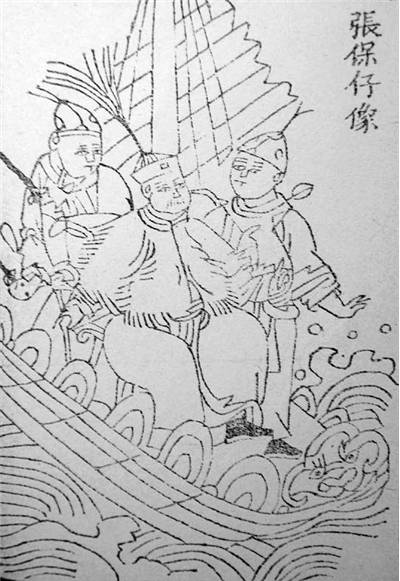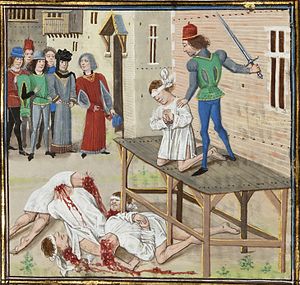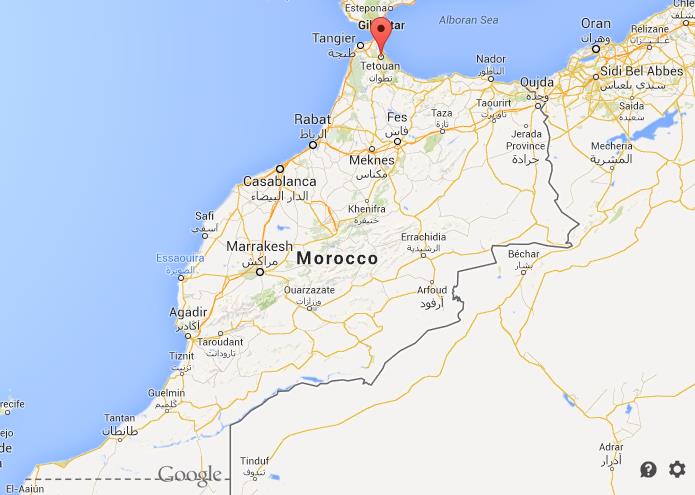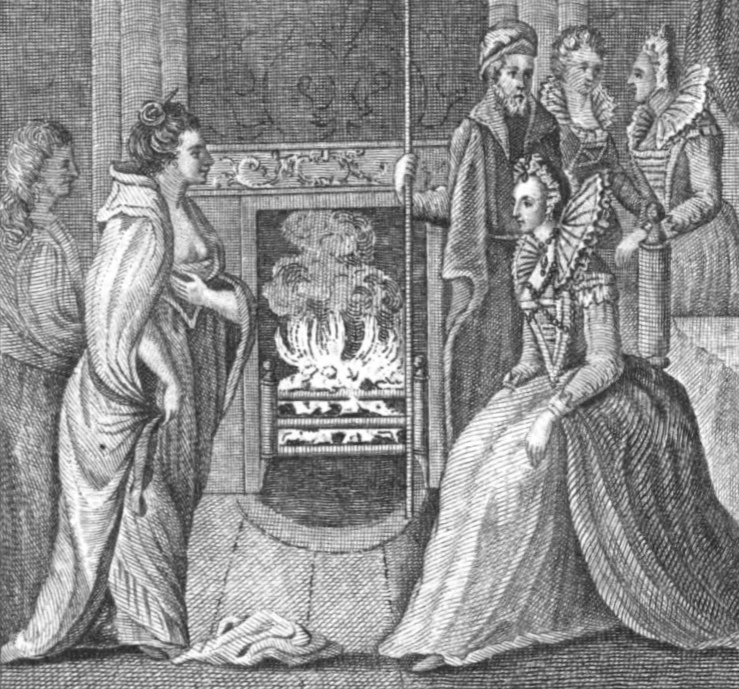One of the most feared pirates of the nineteenth century, Ching Shih¹ and her Red Flag Fleet terrorized the South China Sea until 1810, when she gracefully retired after having been elevated to the nobility, and negotiating a pardon from the Qing government for herself, her husband, and most of her men. She was one of the most successful pirates of all time, but she's barely known outside of the country of her birth.
Probably born in 1775, Ching Shih originally hailed from the Guangdong province in southern China. As is typical for most women of this era, very little is known about Ching Shih's life up until her marriage. All that is known about her is that she was working as a prostitute in a floating brothel when she caught the eye of notorious pirate lord, Zheng Yi.²
There are a couple stories about how these two became a couple. The first one being that Zheng ordered his men to raid the brothel, and spirit Ching Shih away. The other story is that Zheng simply asked her to marry him, and Ching agreed on the condition that she would share in the leadership of the fleet. Whatever the truth, in 1801 Ching and Zheng were married, and they shared in command for several years.
When she was married to Zheng, Ching helped him to unite several small pirate bands into a much larger federation they called the Red Flag Fleet. At their largest, the fleet had more than 70,000 men, and 1,200 ships--significantly more ships than the pitiful Chinese navy.
Unfortunately, Zheng died in 1807, leaving Ching a widow in a precarious position. She was the head of a large fleet of rowdy ne're-do-wells, and she needed to consolidate her power quickly. She did this by recruiting her husband's former advisors, and becoming intimate with her husband's second in command, and adopted son, Cheung Po Tsai.
The relationship between Cheung Po Tsai, Zheng Yi, and Ching Shih is mysterious, complex, and a little headache inducing. Zheng Yi and Cheung Po Tsai were very close, close enough that Zheng adopted Cheung. They were also lovers. Ching had also adopted Cheung, and they would later marry, and have at least one child. The affair was incestous to say the least, and lecherous imaginations can spend many a happy hour imagining what the trio got up to when all parties were still living.
With Cheung Po Tsai, Ching really started to consolidate her rule. She brought even more pirates into her fold, and she began to keep 'order' on the seas with a very strict set of rules. Sailors who went ashore without leave had their ears cut off. Pirates caught stealing booty were beheaded.Villages who paid tribute to the fleet were considered under Ching's protection, and anyone who raided or plundered a protected village was beheaded.
Particularly progressive were Ching's rules regarding the treatment of female captives. Men were required to keep all pertinent body parts in their pants on pains of death so far as female captives were concerned. Sexual assault resulted in the man in question being beheaded. Consensual sex resulted in the man being beheaded, and the woman being thrown overboard. Pirates could marry a captive, and the woman would be made a full member of the fleet. Captives nobody wanted to marry were set ashore.
As idyllic as some of her policies were, Ching was still undeniably a pirate, and pirates are notoriously bloodthirsty. In addition to all the beheadings, Ching was noted for giving violent ends to targets who resisted her. Villages that submitted to her fleet immediately, and paid tribute, were spared and protected. Villages that resisted saw their homes burned, their men killed, and the village leader nailed to the dock by his feet, and beaten to death. Sailors on captured ships were given the option to join the fleet, or be beaten to death. More than one captured captain committed suicide rather than have to deal with being captured by the Red Flag Fleet.
Ching was a major shipping disruption in the area, and the Qing government wanted to see her gone. Unfortunately, the Chinese navy of the time was composed of repurposed merchant ships unsuited to combat. They went so far as to enlist the help of their foes, the British and Portuguese, but they were unable to capture Ching.
Come 1810, things were starting to change. While Ching and the Red Flag Fleet were still dominating the seas, there was a new metaphorical sheriff in Beijing, and he was frighteningly competent at hunting pirates. As several big name pirates began to fall, the Imperial government offered amnesty to any pirates who laid down their swords. After watching their friends be captured and executed, Ching and Cheung decided to take them up on the offer.
Cheung was initially sent to handle negotiations, but was unsuccessful. When talks stalled, Ching walked unarmed into the governor's office in Guangdong with a posse of seventeen, also unarmed, pirates. When negotiations where completed, Ching had gained clemency for all but 400 of her pirates, of which only 126 were executed. In addition to keeping their lives, they were also allowed to keep their ill gotten gains. Ching and Cheung retired especially handsomely. Both were raised to the nobility, and Cheung was made an officer in the Chinese navy.
Negotiations almost stalled when the governor required that the pardoned pirates kneel before him in homage. The pirate masses definitely weren't going to kneel in front of the governor, so the governor reduced his requirement to just the leaders, Ching and Cheung. This was a pretty non-negotiable point on the part of the governor, but Ching and Cheung weren't too keen on the humiliation. To satisfy the pride of all parties, they convinced the governor to dissolve the adoption that made Ching Cheung's mother, and had the governor marry them. At the end of the ceremony, the couple traditionally knelt in thanks to the officiant, neatly solving the kneeling problem.
After negotiation her retirement from piracy, Ching returned to Guangdong. She and Cheung had one son, and after Cheung died Ching opened a casino/brothel. She lived to see her son grow up, and her grandchildren be born. She died in 1844 at the age of 69.
¹It should be noted that there are multiple spellings for all of the names mentioned in this narrative.
² Ching Shih was not Ching's birth name, it literally means 'Widow of Cheng' (Zheng).
Sources
Ching Shih, the Former Prostitute Who Became the Greatest Pirate Who Ever Lived
Meet Ching Shih: the Prostitute Turned Pirate Who Banned Rape in Her 50,000 Man Fleet
Ching Shih Pirate Biography and Facts
Ching Shih
Ching Shih (1775-1844)
Ching Shih: From Prostitute to Pirate Lord
Cheung Po Tsai and Ching Shih: Pirate Monarchs
Cheng I Sao
Cheng I Sao, Female Pirate Extraordinaire
 |
| Contemporary depiction of Ching Shih |
There are a couple stories about how these two became a couple. The first one being that Zheng ordered his men to raid the brothel, and spirit Ching Shih away. The other story is that Zheng simply asked her to marry him, and Ching agreed on the condition that she would share in the leadership of the fleet. Whatever the truth, in 1801 Ching and Zheng were married, and they shared in command for several years.
When she was married to Zheng, Ching helped him to unite several small pirate bands into a much larger federation they called the Red Flag Fleet. At their largest, the fleet had more than 70,000 men, and 1,200 ships--significantly more ships than the pitiful Chinese navy.
Unfortunately, Zheng died in 1807, leaving Ching a widow in a precarious position. She was the head of a large fleet of rowdy ne're-do-wells, and she needed to consolidate her power quickly. She did this by recruiting her husband's former advisors, and becoming intimate with her husband's second in command, and adopted son, Cheung Po Tsai.
The relationship between Cheung Po Tsai, Zheng Yi, and Ching Shih is mysterious, complex, and a little headache inducing. Zheng Yi and Cheung Po Tsai were very close, close enough that Zheng adopted Cheung. They were also lovers. Ching had also adopted Cheung, and they would later marry, and have at least one child. The affair was incestous to say the least, and lecherous imaginations can spend many a happy hour imagining what the trio got up to when all parties were still living.
 |
| Cheung Po Tsai. Like any pirate worth their salt, it is rumored that he hid large amounts of treasure in a cave. |
Particularly progressive were Ching's rules regarding the treatment of female captives. Men were required to keep all pertinent body parts in their pants on pains of death so far as female captives were concerned. Sexual assault resulted in the man in question being beheaded. Consensual sex resulted in the man being beheaded, and the woman being thrown overboard. Pirates could marry a captive, and the woman would be made a full member of the fleet. Captives nobody wanted to marry were set ashore.
As idyllic as some of her policies were, Ching was still undeniably a pirate, and pirates are notoriously bloodthirsty. In addition to all the beheadings, Ching was noted for giving violent ends to targets who resisted her. Villages that submitted to her fleet immediately, and paid tribute, were spared and protected. Villages that resisted saw their homes burned, their men killed, and the village leader nailed to the dock by his feet, and beaten to death. Sailors on captured ships were given the option to join the fleet, or be beaten to death. More than one captured captain committed suicide rather than have to deal with being captured by the Red Flag Fleet.
Ching was a major shipping disruption in the area, and the Qing government wanted to see her gone. Unfortunately, the Chinese navy of the time was composed of repurposed merchant ships unsuited to combat. They went so far as to enlist the help of their foes, the British and Portuguese, but they were unable to capture Ching.
Come 1810, things were starting to change. While Ching and the Red Flag Fleet were still dominating the seas, there was a new metaphorical sheriff in Beijing, and he was frighteningly competent at hunting pirates. As several big name pirates began to fall, the Imperial government offered amnesty to any pirates who laid down their swords. After watching their friends be captured and executed, Ching and Cheung decided to take them up on the offer.
Cheung was initially sent to handle negotiations, but was unsuccessful. When talks stalled, Ching walked unarmed into the governor's office in Guangdong with a posse of seventeen, also unarmed, pirates. When negotiations where completed, Ching had gained clemency for all but 400 of her pirates, of which only 126 were executed. In addition to keeping their lives, they were also allowed to keep their ill gotten gains. Ching and Cheung retired especially handsomely. Both were raised to the nobility, and Cheung was made an officer in the Chinese navy.
 |
| Chinese junk ships, the type of ship Ching used. |
After negotiation her retirement from piracy, Ching returned to Guangdong. She and Cheung had one son, and after Cheung died Ching opened a casino/brothel. She lived to see her son grow up, and her grandchildren be born. She died in 1844 at the age of 69.
¹It should be noted that there are multiple spellings for all of the names mentioned in this narrative.
² Ching Shih was not Ching's birth name, it literally means 'Widow of Cheng' (Zheng).
Ching Shih, the Former Prostitute Who Became the Greatest Pirate Who Ever Lived
Meet Ching Shih: the Prostitute Turned Pirate Who Banned Rape in Her 50,000 Man Fleet
Ching Shih Pirate Biography and Facts
Ching Shih
Ching Shih (1775-1844)
Ching Shih: From Prostitute to Pirate Lord
Cheung Po Tsai and Ching Shih: Pirate Monarchs
Cheng I Sao
Cheng I Sao, Female Pirate Extraordinaire











